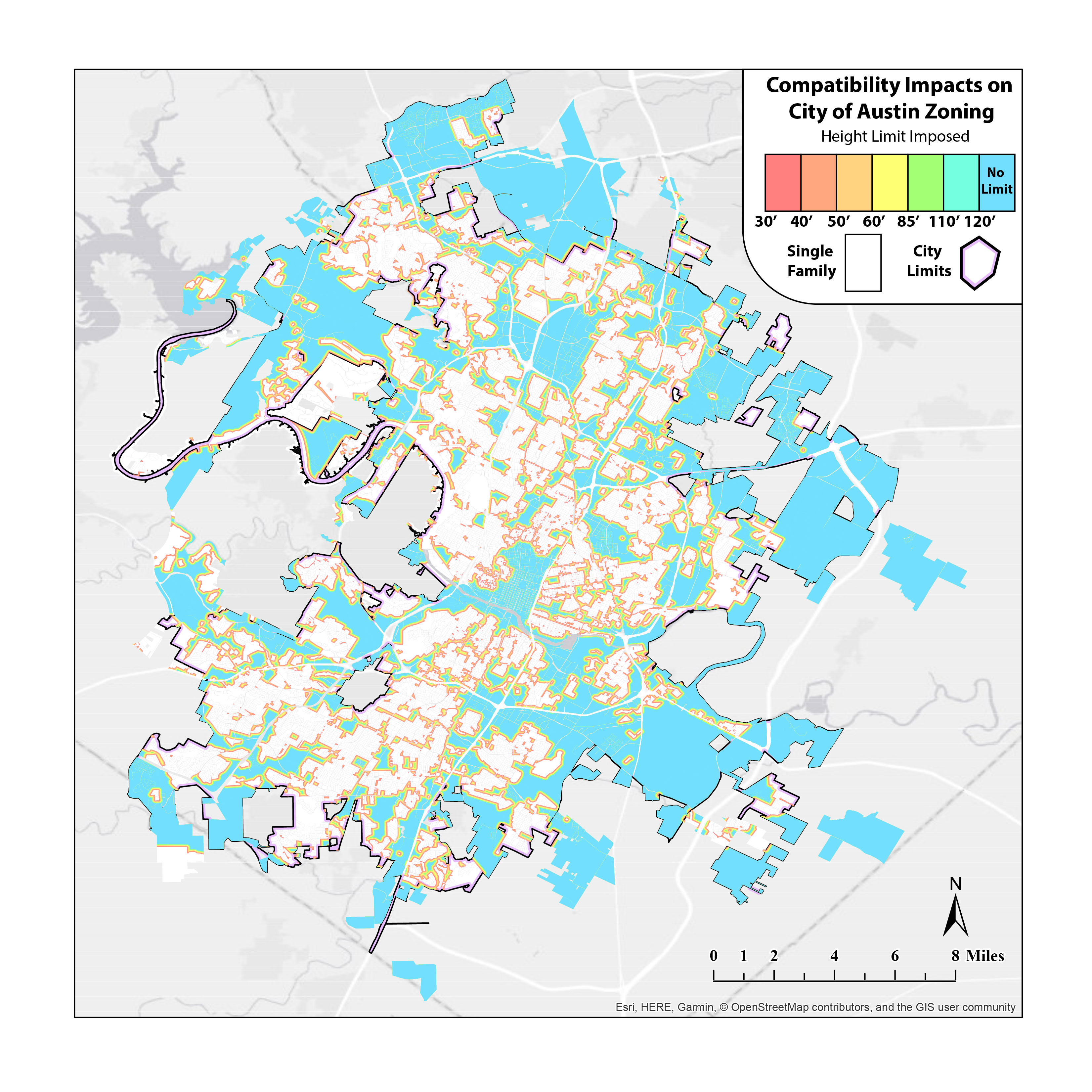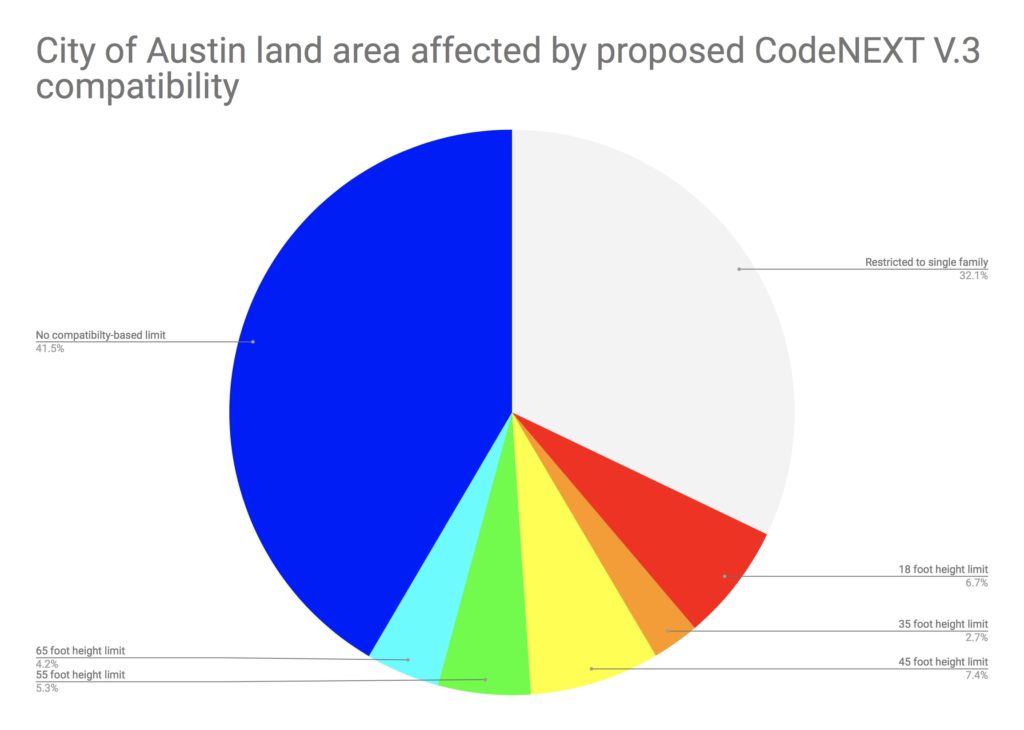Austin is a green city.
Austin is welcoming to all people.
Austin is a smart city of the future.
Austin limits access to affordable housing and low-carbon lifestyle options because some people feel their lifestyles are threatened by being able to see other buildings from the middle of their back yard.
One of these statements is not like the others.
The weird concept here – compatibility – is actually codified into City of Austin’s land development code, a situation not dissimilar to many American cities to be sure. Yet, what makes Austin really weird is that city staff, citizens, advisory groups, commissions, consultants, and elected officials have been working on a process called CodeNEXT to modernize Austin’s land development code based upon various environmental, equity, affordability, and community plans and goals for the last five years – and as of now, the compromise proposal is to continue to use this strange tool, in spite of significant negative environmental, equity, tax base, and traffic consequences.
YIMBYs point out how foreign this concept is to many cities and neighborhood with a very high quality of life – many of the places you like to visit. NIMBYs seem to get tied up in knots debating the correct technical interpretation of various details of continuing this weird tool. And City Council had to deal with all the complaints from people worried about preserving this strange back yard protection when CodeNEXT Version 1 came out and instructed staff to make sure to make it clear to those concerned that this type of exclusion would continue.
But how big of an affect does this compatibility policy have on Austin?
Here’s a map of areas impacted by compatibility in Austin in the existing code. Areas that are shown in white are exclusive single family areas and areas that are blue have no compatibility-based restrictions on height of buildings. The rainbow in between are all the parts of Austin impacted by compatibility, where the height of buildings is limited by this concept of whether someone could see into someone else’s back yard.
 While this creates a funny squiggly set of rainbows across the city, it ends up being a significant part of the city, and especially impactful on areas where it otherwise makes sense to add housing, jobs, schools, and all the elements of complete communities.
While this creates a funny squiggly set of rainbows across the city, it ends up being a significant part of the city, and especially impactful on areas where it otherwise makes sense to add housing, jobs, schools, and all the elements of complete communities.
Buildings are not allowed to be over certain heights in 22% of the land area of the City of Austin based on the concept of someone standing in the middle of their back yard and not wanting to see any buildings, including along many of the corridors where the people of Austin will be investing at least half a billion dollars to facilitate healthy, walkable urban development, dramatically limiting the benefits of these investments and excluding many Austinites from enjoying these benefits.
What was proposed in CodeNEXT Version 3 for compatibility?
Our understanding of CodeNEXT Version 3 is that this concept of limiting housing based upon someone’s view from their back yard is proposed to be continued in Austin, and appears to actually be growing in land area affected, limiting development in 26% of the City, a four percent increase from current code.

